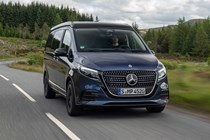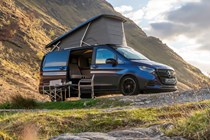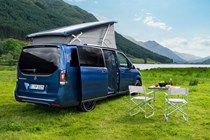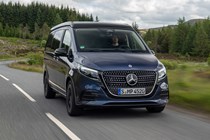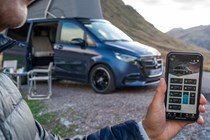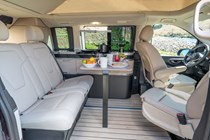
Mercedes-Benz V-Class Marco Polo engines, drive and performance
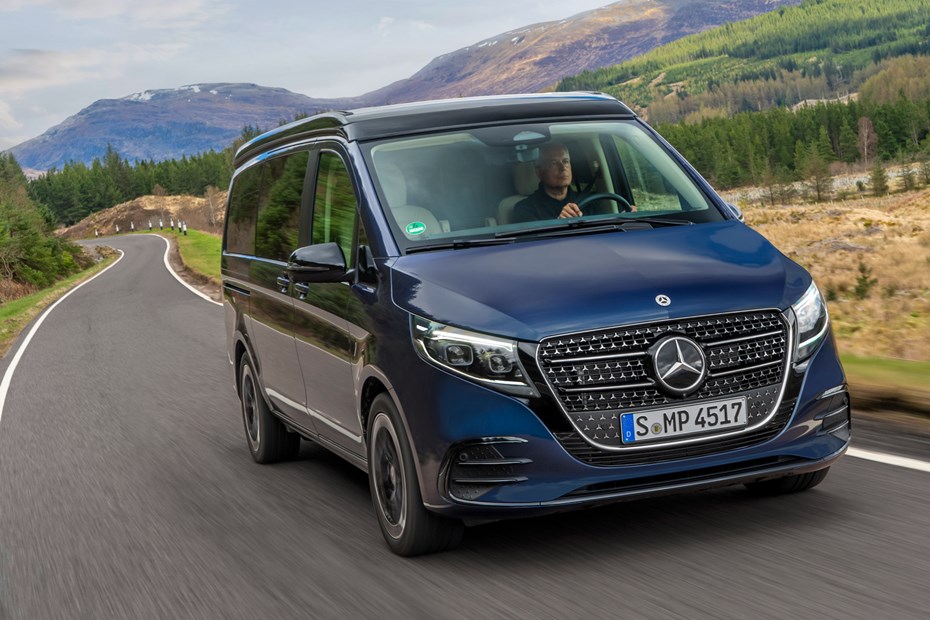
- Only available with a diesel engine
- Plenty of performance from latest V300d
- No hybrid or other fuel-saving measures
Diesel engines
The Mercedes-Benz V-Class Marco Polo has only ever been available in the UK with conventional turbodiesel engines. Initially these were 2.1-litre units, but they were replaced with more modern 2.0-litre alternatives in 2019. The 2024 update makes things even easier by only offering a single power output.
Gladly, given the thing weighs about 2.5 tonnes, it’s the more powerful 237hp model that remains on sale, badged V300d. Previously a V220d with 163hp was also offered, but this did occasionally struggle with the bulk. Underlining this point, the V220d took 12.3 seconds to accelerate 0-62mph – the latest V300d does the same in a much swifter 8.8 seconds.
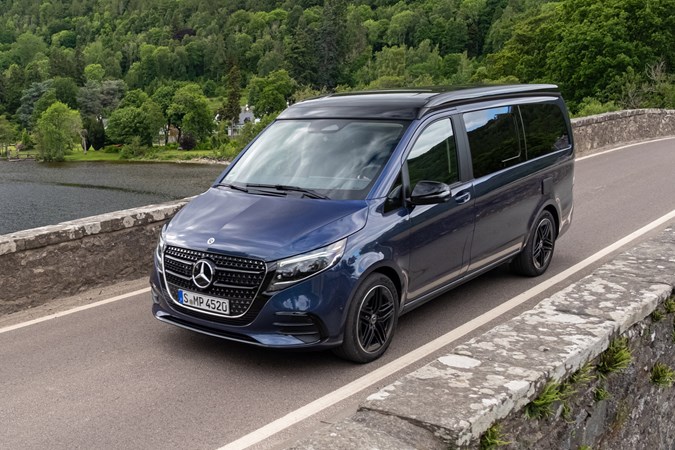
This is thanks in part to a substantially higher torque (pulling power) rating of 500Nm; the lesser engine was limited to 380Nm. A nine-speed automatic transmission is fitted as standard on all Marco Polos, replacing the seven-speed auto used by the 2.1-litre engines.
If you’re buying used, it’s worth knowing the original 2.1-litre model also came as a V220d with 163hp and 380Nm. It’s a much coarser engine, however, so we’d fully recommend seeking out a newer 2.0-litre version if you can afford it. The 2.1 also came as a V250d, with 190hp and 440Nm; the same comments about coarseness apply. The seven-speed auto isn’t as smooth as the new nine-speed, either.
What’s it like to drive?
- Suspension can be a touch thuddy and it rolls in the corners if you’re clumsy
- But overall its very polished, with good brakes and gearbox programming
- Regular car drivers shouldn’t find it intimidating and visibility is good
As standard, the Marco Polo comes on conventional suspension, similar to that fitted to the Mercedes-Benz Vito van it shares much of its underpinnings with. However, the 2024 update model we’ve most recently been testing was fitted with the latest air suspension, which in addition to having that self-levelling party trick for bumpy camping grounds, also does a slightly better job of dealing with rough and rutted road surfaces.
It isn’t as sophisticated as the best passenger cars, still thudding back into the road following sharp compressions. The Marco Polo can also feel a little top-heavy when tottering around corners, but it isn’t especially intimidating to drive. Visibility from the driver’s seat is excellent, and the camper is easy to position on the road. Even on single-track Scottish lanes we found the width easy to judge when squeezing past on-coming traffic.
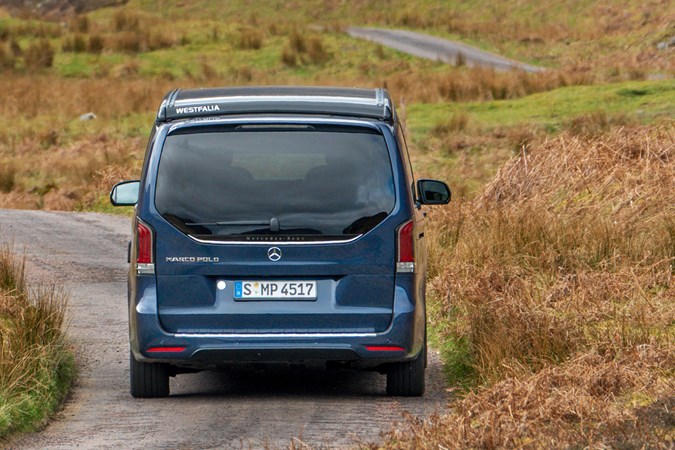
Considering its size and 2.7-tonne weight, it’s unfair to expect the Marco Polo to drive like a decent SUV, let alone a low-slung car. And it doesn’t. However, it’s also clear that a lot of care and attention has been lavished on the steering, suspension, gearbox and brakes to make the best of what’s available.
The default Comfort driving mode is fine for pottering around town, but switch to Sport and there’s a surprising uplift in performance. Altering the engine response and the gearbox programming, it delivers a sharper drive that makes the most of the accurate, sweetly weighted steering as well as the 237hp available from the engine.
The gearbox is particularly impressive in this setting – downshifting when you decelerate for corners, and holding the gear until accelerate back out again, making the whole van feel more controlled and delivering the available performance with gusto. We’d also like to highlight the brakes, which are superbly well-judged and another element that raises the Marco Polo beyond the bear necessities.
All told, this Mercedes is much more of a pleasure to drive than a chore. There’s a touch more depth to the experience than you get in the VW California, too, with the Volkswagen showing its van-based origins a little more clearly.


